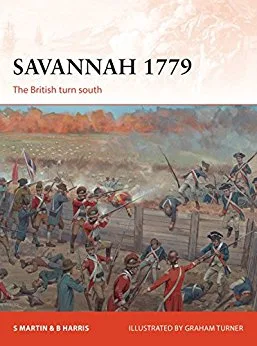I found this quick reference sheet on the internet. My favorite Rev War set of rules which have given me great games for a very long time. As I will be posting a couple of my Rev War battles soon readers may like to try these out. I have added a few house house rules we used over the years. Hope you enjoy!
I believe these were done by Vincent Tsao and can be found here:
http://www.wfgamers.org.uk/resources/callan/callan.htm
Order of Play in a Turn (all movement is simultaneous)
- Compulsory Retreats/Routs following combat in previous turns.
- Calculate Morale effects provoked by 1 above.
- Firing
- Allocate Command Points. Move commanders and couriers.
- Move units. Announce attempted advances to contact/charges before moving.
- Combat.
- Re-dress ranks (according to training) of units that did not move this turn.
Command Points CP
Move own commander up to 1 die (choice of average or D6) inches = 1CP
Inspire troops in combat (give +1) = 3 CPs *
Rally (remove) one DP = 2 CPs * * must be in contact with unit
Disorder/demoralization points DP
1st class (elite, veteran) may remove up to 2 DPs per turn if stationary and not in combat
2nd class (line) may remove 1 DP per turn as above
3rd class (green, partisans) may remove 1 DP per turn if stationary, not in combat/shot at
4th class (militia, Indians) may only remove DPs with aid of an officer
5th class (unmotivated Indians) may only remove DPs with the aid of the Army CO
Artillery Fire range under 10 inches close, 10-30 long (light) 10-36 long (medium)
Roll one D6 for each stand firing modified by below:
+1 heavy gun, target column or limbered artillery, same target/range as last turn
- 1 new target, each DP of firing stand, light gun
- 2 target in fieldwork or stone building or target in skirmish order/unlimbered
Long range inflict 1 DP for 4 or higher.
Short range inflict 1 DP for 2 or 3, 2 DPs for 4 or 5, 1 DP and 1 casualty for 6 or higher.
Infantry fire Only skirmishing infantry can fire and move in the same turn.
Musket range 8 inches, rifles 10 inches. Roll 1 D6 for each stand firing, minus DPs of firing unit. Halve result shooting at skirmishers/unlimbered artillery, halve if target in fieldwork or building. Round up.
1 DP for each 6 rolled. Skirmishers roll again on 5, with subsequent 4,5,6 = 1 DP.
Movement is the number of dice score X inches
1st/2nd/3rd class units may move one or two average dice
4th/5th class units may move one average dice or one average plus one D6
Skirmishers may move an extra D6, Cavalry may move one or two extra D6
Formed troops get 1 DP for each 1 or 2 rolled, 1, 2 or 3 in woods.
Hessian infantry (except Jaegers and von Bose in South) move one average die or one average die + 2 inches.
Cavalry who charge must roll at least 3 dice. Can change speed 1 dice up or down per turn.
Moving in woods or uphill -1 inch from each die rolled.
Wheeling, as uphill get 1 DP.
Change formation of facing takes 1 turn, get 1 DP (2 if under fire).
Cross fence/wall,; stop at obstacle, continue nice next turn.
Retire facing enemy: ½ move get 1 DP if cavalry or under fire.
Morale: seeing friends retreat/rout within 6 inches
Troops ignore retreat of lower grade friends but get 1 DP if such rout within 6 inches.
If equal/higher grade friend retreats within 6 inches get 2 DPs.
If equal grade friend routs within 6 inches get 2 DPs and one stand deserts.
If higher grade friend routs within 6 inches get 3 DPs and one stand deserts.
Combat occurs when a unit advances within 4 inches of enemy. Each side throws an average die modified by below:
+3 each training grade better than enemy
defending fort or stone building
+2 defending fieldwork or wood building
making bayonet attack
+1 terrain advantage
officer spends 3 CPs inspiring troops
- 3 in skirmish order
attacked in flank/rear
- 2 each DP, each casualty
- 1 outnumbered
- 2 outnumbered 3-2
- 3 outnumbered 2-1
- 5 outnumbered 3-1 or worse 1 cavalry figure = three infantry, one gun = six infantry
Result is difference in scores:
+4 or more: Easy victory get 1 DP. 1st/2nd/3rd class obey orders. 4th/5th class pursue.
+2/3: Successful get 1 DP and (vs. infantry or artillery, not in fort, building or fieldwork) one casualty. Halt one turn.
+1/even/-1: Stand off both sides halt fight continues next turn. Each get 1 DP and (unless infantry facing cavalry or bayonet attack, or in a fort, building or fieldwork) one casualty
-2/-3/-4: Driven back get 2 DPs and one casualty. Retreat one move at maximum speed.
-5/-6/-7/-8: Defeated get 2 DPs and 2 casualties. Retreat at maximum speed behind next line of friendly troops, or next terrain obstacle if no support.
-9 or worse: Routed run away at maximum speed to beyond enemy artillery range or next terrain obstacle, whichever is further. Get 4 DPs and 2 casualties.
House rules:
Must move full distance rolled unless point out stopping point (i.e. stop at fence line or top of hill, etc).
Can roll movement for entire brigade if moving together.
Corlears Hook Fencibles House rules: after 2nd stand off in a row both sides retreat 1 average die unless defending an obstacle, fieldwork, building or fort.
Militia units with 50% losses or more flee the field remove from table. Other units with 75% or more losses flee. No further DP losses by friends who see this.









